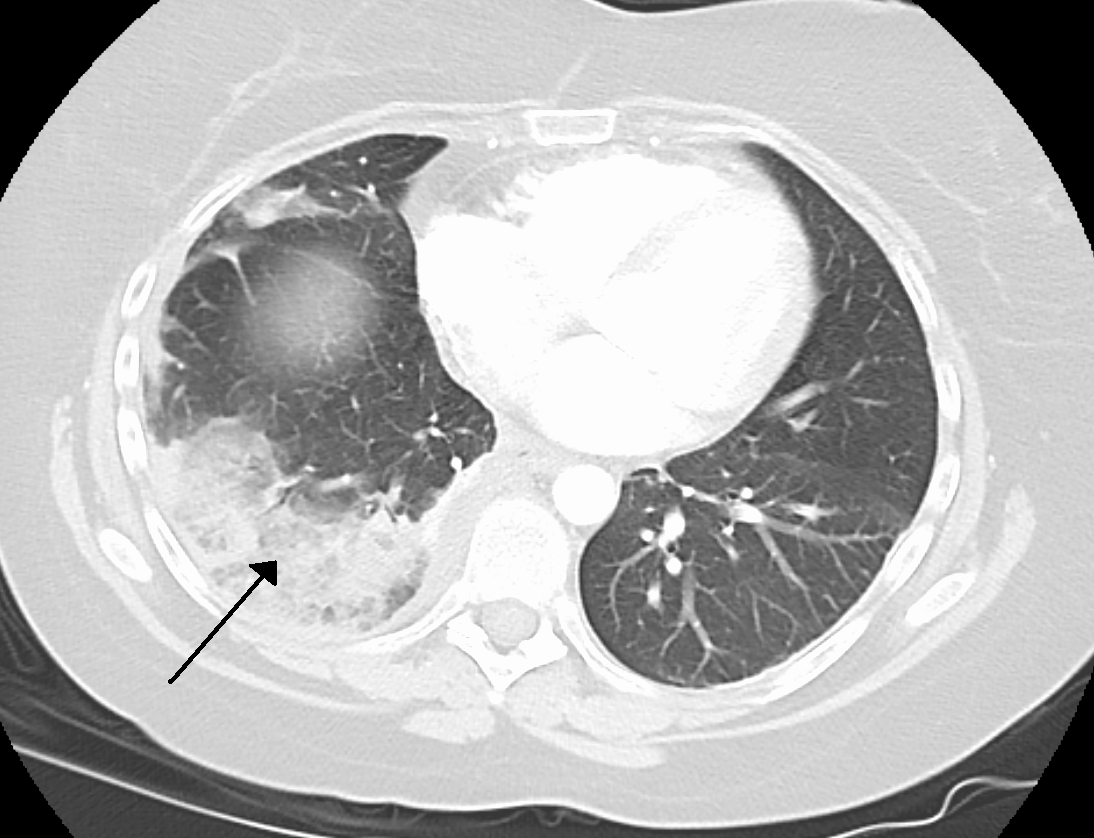bronchial circulation on:
[Wikipedia]
[Google]
[Amazon]
The bronchial circulation is the part of the  Blood reaches from the pulmonary circulation into the lungs for gas exchange to oxygenate the rest of the body tissues. But bronchial circulation supplies fully oxygenated arterial blood to the lung tissues themselves. This blood supplies the bronchi and the pleurae to meet their nutritional requirements.
Because of the dual blood supply to the lungs from both the bronchial and the pulmonary circulation, this tissue is more resistant to
Blood reaches from the pulmonary circulation into the lungs for gas exchange to oxygenate the rest of the body tissues. But bronchial circulation supplies fully oxygenated arterial blood to the lung tissues themselves. This blood supplies the bronchi and the pleurae to meet their nutritional requirements.
Because of the dual blood supply to the lungs from both the bronchial and the pulmonary circulation, this tissue is more resistant to
systemic circulation
In vertebrates, the circulatory system is a organ system, system of organs that includes the heart, blood vessels, and blood which is circulated throughout the body. It includes the cardiovascular system, or vascular system, that consists of ...
that supplies nutrients and oxygen to the cells that constitute the lungs
The lungs are the primary organs of the respiratory system in many animals, including humans. In mammals and most other tetrapods, two lungs are located near the backbone on either side of the heart. Their function in the respiratory syste ...
, as well as carrying waste products away from them. It is complementary to the pulmonary circulation
The pulmonary circulation is a division of the circulatory system in all vertebrates. The circuit begins with deoxygenated blood returned from the body to the right atrium of the heart where it is pumped out from the right ventricle to the lun ...
that brings deoxygenated blood to the lungs and carries oxygenated blood away from them in order to oxygenate the rest of the body.
In the bronchial circulation, blood goes through the following steps:
# Bronchial arteries carry oxygenated blood to the lungs
# Pulmonary capillaries
A capillary is a small blood vessel, from 5 to 10 micrometres in diameter, and is part of the microcirculation system. Capillaries are microvessels and the smallest blood vessels in the body. They are composed of only the tunica intima (the in ...
, where there is exchange of water
Water is an inorganic compound with the chemical formula . It is a transparent, tasteless, odorless, and Color of water, nearly colorless chemical substance. It is the main constituent of Earth's hydrosphere and the fluids of all known liv ...
, oxygen
Oxygen is a chemical element; it has chemical symbol, symbol O and atomic number 8. It is a member of the chalcogen group (periodic table), group in the periodic table, a highly reactivity (chemistry), reactive nonmetal (chemistry), non ...
, carbon dioxide
Carbon dioxide is a chemical compound with the chemical formula . It is made up of molecules that each have one carbon atom covalent bond, covalently double bonded to two oxygen atoms. It is found in a gas state at room temperature and at norma ...
, and many other nutrients
A nutrient is a substance used by an organism to survive, grow and reproduce. The requirement for dietary nutrient intake applies to animals, plants, fungi and protists. Nutrients can be incorporated into cells for metabolic purposes or excret ...
and waste
Waste are unwanted or unusable materials. Waste is any substance discarded after primary use, or is worthless, defective and of no use. A by-product, by contrast is a joint product of relatively minor Value (economics), economic value. A wast ...
chemical
A chemical substance is a unique form of matter with constant chemical composition and characteristic properties. Chemical substances may take the form of a single element or chemical compounds. If two or more chemical substances can be combin ...
substances between blood
Blood is a body fluid in the circulatory system of humans and other vertebrates that delivers necessary substances such as nutrients and oxygen to the cells, and transports metabolic waste products away from those same cells.
Blood is com ...
and the tissues
# Bronchial veins drain venous blood from the large main bronchi into the azygous vein, and ultimately the right atrium. Venous blood from the bronchi inside the lungs drains into the pulmonary vein
The pulmonary veins are the veins that transfer Blood#Oxygen transport, oxygenated blood from the lungs to the heart. The largest pulmonary veins are the four ''main pulmonary veins'', two from each lung that drain into the left atrium of the h ...
s and empties into the left atrium; since this blood never went through a capillary bed it was never oxygenated and so provides a small amount of shunted deoxygenated blood into the systemic circulation.
infarction
Infarction is tissue death (necrosis) due to Ischemia, inadequate blood supply to the affected area. It may be caused by Thrombosis, artery blockages, rupture, mechanical compression, or vasoconstriction. The resulting lesion is referred to as a ...
. An occlusion of the bronchial circulation does not cause infarction, but it can still occur in pulmonary embolism
Pulmonary embolism (PE) is a blockage of an pulmonary artery, artery in the lungs by a substance that has moved from elsewhere in the body through the bloodstream (embolism). Symptoms of a PE may include dyspnea, shortness of breath, chest pain ...
when the pulmonary circulation is blocked and the bronchial circulation cannot fully compensate for it.
References
Angiology {{respiratory-stub